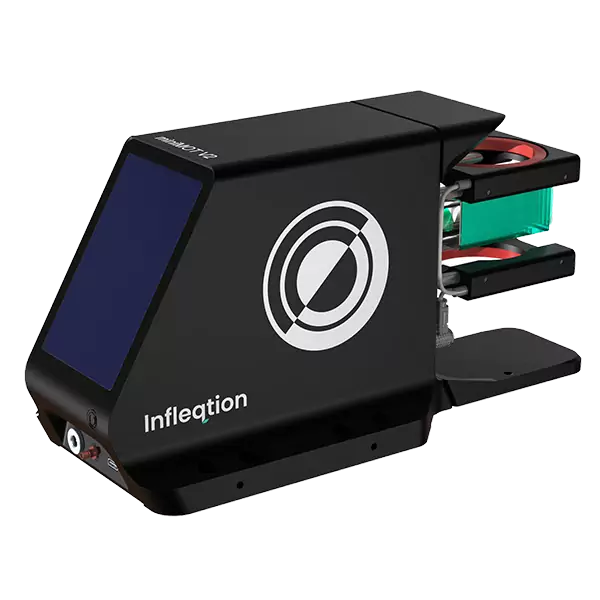
Quantum Cores: Cold Atoms Systems
Laser 2000 partners with multi-platform quantum technology company Infleqtion to bring quantum technology to more businesses and applications.

The Anatomy of a Magneto-Optical Trap

A magneto-optical trap (MOT) is a sophisticated experimental apparatus used in experimental physics to cool and trap atoms. It consists of three key components: lasers, magnetic fields, and a vacuum chamber.
Lasers: The MOT uses laser beams to slow down and cool atoms. These lasers are tuned to a frequency slightly below the resonance frequency of the atoms, causing them to absorb photons and slow down due to the momentum transfer.
Magnetic Fields: The MOT also employs magnetic fields to confine and trap the cooled atoms. These fields create a spatially varying magnetic field gradient that traps the atoms at the intersection of the laser beams.
Vacuum Chamber: The entire setup operates within a vacuum chamber to eliminate any interference from external particles and to prolong the lifetime of the trapped atoms.
The magneto-optical trap works by first slowing down a cloud of atoms using laser cooling techniques and then trapping them at the point where the magnetic and optical forces balance. Once trapped, the atoms can be further manipulated and studied for various applications in quantum physics, precision measurements, and quantum computing.



Infleqtion – Making Quantum Possible
Sense, communicate, and process critical information such as time, motion, and RF signals with unparalleled power and precision.
For over a decade, Infleqtion has been a critical ecosystem partner for the quantum industry. It is a trusted supplier of key component technologies to many of the world’s research labs as well as early commercial leaders in quantum machine development. From offering individual components to complete plug-and-play solutions, Infleqtion carefully crafts its products to provide the precision needed to deliver accurate results for your experiments.
The Infleqtion product range includes UHV glass cells, atom sources, configurable magneto-optical trap (MOT) systems that can produce a Bose-Einstein Condensate (BEC), and ion devices.
